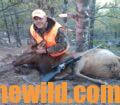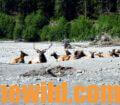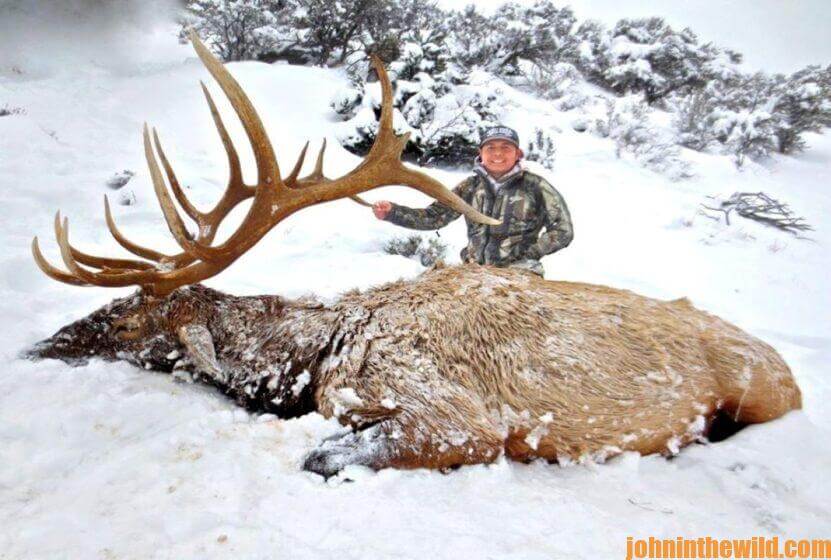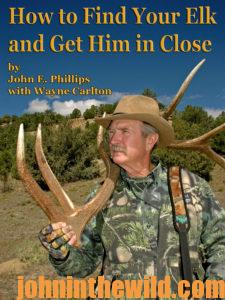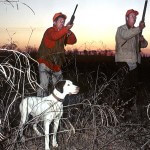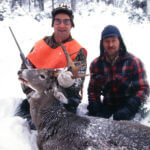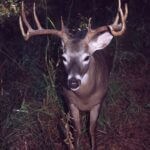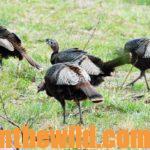Editor’s Note: Mike Lee, formerly from Montana but now living in Oregon, has been hunting elk for almost four decades – both on Montana and Oregon public lands. According to Lee, “Because I like to work from the ridgeline of mountains down to the lower elevations, I hunt in trees and dark timber most of the time. So, if I’m calling an elk from down below me, more than likely, I’ll meet him in the timber.”
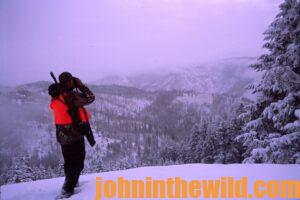
Some friends of mine from Oregon were hunting on the last day of elk season in Montana one year. Our group had taken two nice mule deer and two really-nice white-tailed bucks in Montana. If you have a general-season tag, you can take either a cow or a bull there. Our group had two cow tags and two bull tags left.

On the last day of the season, we went to the High Country to look for some elk and got into a snowstorm. Since we couldn’t see very well, I suggested we move out on a finger ridge and get on the downwind side, so we wouldn’t catch as much snow. Then we spotted a herd of about 20 or 30 elk in the top of a little bowl that was so close to the road that most hunters never would have hunted it.
We made two shots and got two, 6×6 bulls. Because we were only a mile from the truck, we field dressed the bulls and slid them whole downhill all the way to the truck. When we got to the truck, we quartered the elk and loaded them into the truck. The snow dumped about 5 – 6 inches on us in about 4 hours. We couldn’t see past 100 yards with our binoculars.
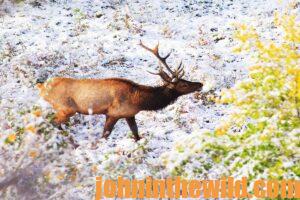
But snow is good for the elk hunter, because you can see the elk’s tracks easily, and you can follow the tracks to find out where they’re bedding and feeding. Instead of walking right up to the tracks and following them, I try to stay 50 to 100 yards away from the tracks and look at them with my binoculars. On public land in Montana, most of the ground you’re hunting will be mountainous. Most of the flatlands at the base of the mountains are privately owned and often leased to outfitters. So, on public land, I’m usually hunting at 5,000 to 10,000 feet of elevation. I don’t use any horses. All my elk hunts are on foot. Most elk hunters don’t want to leave their trucks as early as I do, and they usually don’t want to climb to 10,000 feet before they start hunting. I believe this is another reason I’m successful hunting on public land. Most of the time, elk hunters will begin hunting at the base of a mountain and hunt up. Because I’m at the top of the mountain before daylight, most often, the other hunters are pushing elk to me instead away from me, as I hunt down a mountain.
Secrets for Finding Elk on Public Lands:
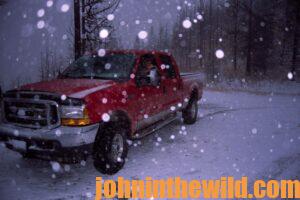
- Do your homework. Call a state wildlife biologist about the land where you’ll be hunting. Most of the biologists are happy to share information with you. In return, they hope you’ll report back to them on any elk you take, and where you’ve hunted to harvest that elk. The biologist can be extremely helpful and suggest places where you have a good chance of being successful.
- Go on the internet, and read some of the elk forums. Ask questions about the public lands you plan to hunt.
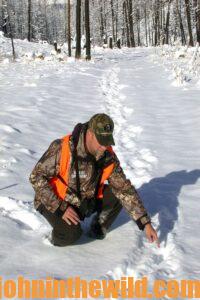
- Plan to make one or two trips before the season to scout, or come out a week early before the season starts to scout. Generally, the more time you can spend scouting, the less time you’ll have to spend hunting.
- Plan to hunt all day long from before daylight until after dark. Pack enough food, water, toilet paper and dry clothes to allow you to stay out all day long, regardless of the weather.

- Be persistent. Don’t just walk up to an area, look at the landscape, and say, “Well, there’s no elk here.” Use your binoculars, and look for the travel trails that the elk have been using often. In canyons, you can see trails leading into and out of them. If you’re persistent in studying the land with your binoculars, you’ll drastically increase your odds for taking an elk.
I’m often asked, “What six tips would you give elk hunters on public lands that could increase their odds for taking a bull?”
- Talk to other hunters you meet during your hunt. You’ll probably run into a few successful hunters who are packing their meat out or field dressing their elk. Always offer to help other hunters skin-out their elk and/or pack-out their meat. Many times, they’ll tell you where they’ve seen elk, and in what areas they’ve been hunting elk. Their hunts are over, so they have nothing to lose by helping you, especially if you’ve helped them skin and quarter their elk and/or carry their elk out.
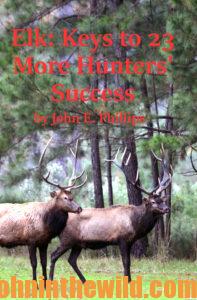 To learn more about hunting elk successfully, check out John E. Phillips’ book, “Elk: Keys to 23 More Hunters’ Success,” available in Kindle, print and Audible at https://www.amazon.com/gp/product/B09B2H9V6Y/ref=dbs_a_def_rwt_hsch_vapi_tkin_p1_i2.
To learn more about hunting elk successfully, check out John E. Phillips’ book, “Elk: Keys to 23 More Hunters’ Success,” available in Kindle, print and Audible at https://www.amazon.com/gp/product/B09B2H9V6Y/ref=dbs_a_def_rwt_hsch_vapi_tkin_p1_i2.
And see John E. Phillips’ book, “How to Find Your Elk and Get Him in Close,” available in Kindle, print and Audible versions at http://amzn.to/17ENNqK. You may have to copy and paste these clicks into your browser. When you click on these books, notice on the left where Amazon allows you to read and hear 10% of the books for free. On the right side of the page and below the offer for a free Audible trial, you can click on Buy the Audible with one click.
Tomorrow: What Happened on a Roosevelt Elk & Whitetail Hunt

